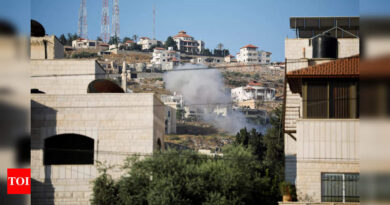Lebanon Faces Humanitarian Catastrophe: 1.2 Million Displaced Amid Israel-Hezbollah Conflict
Lebanon is facing a severe humanitarian crisis as the ongoing conflict between Israel and Hezbollah has displaced nearly 1.2 million people by October 2024. The large-scale displacement is the result of intensified Israeli airstrikes targeting Hezbollah strongholds across southern and eastern Lebanon, as well as the southern suburbs of Beirut. With Israel ramping up military efforts to neutralize Hezbollah’s military capabilities, Lebanon’s civilian population is bearing the brunt of the destruction, marking one of the worst humanitarian crises in the country’s recent history.
A Surge in Displacement
Lebanese authorities and international organizations report a staggering increase in displaced individuals as the conflict escalates. By early October 2024, 1.2 million people have been forced to flee their homes, primarily from Hezbollah-controlled areas in the south and east. The destruction of residential zones has left civilians seeking refuge in safer parts of Lebanon or, in many cases, crossing the border into Syria.
Between September 23 and 29, over 300,000 people, including both Lebanese citizens and Syrian refugees, fled to Syria. This mass displacement underscores the sheer scale of the devastation, with civilians fleeing from southern Lebanon and the increasingly targeted suburbs of Beirut.
In Lebanon, many displaced families have sought shelter with friends or relatives, while tens of thousands have been forced into 867 emergency shelters. However, over 600 shelters are already at full capacity, leaving many in dire need of basic necessities such as food, water, and healthcare.
Destruction of Infrastructure
Lebanon’s infrastructure has suffered catastrophic damage, further compounding the challenges facing the country. Continuous Israeli airstrikes have destroyed residential areas, public buildings, roads, hospitals, and water systems. In southern Lebanon and the outskirts of Beirut, many communities have been reduced to rubble, cutting off access to electricity, clean water, and medical services.
The situation is worsened by Lebanon’s ongoing economic crisis, which has left the country ill-equipped to handle a displacement crisis of this magnitude. Inflation, unemployment, and a failing public sector have made it difficult for displaced families to access the resources they need to survive. Schools, hospitals, and aid organizations are overwhelmed as they attempt to meet the growing demands of the displaced population.




